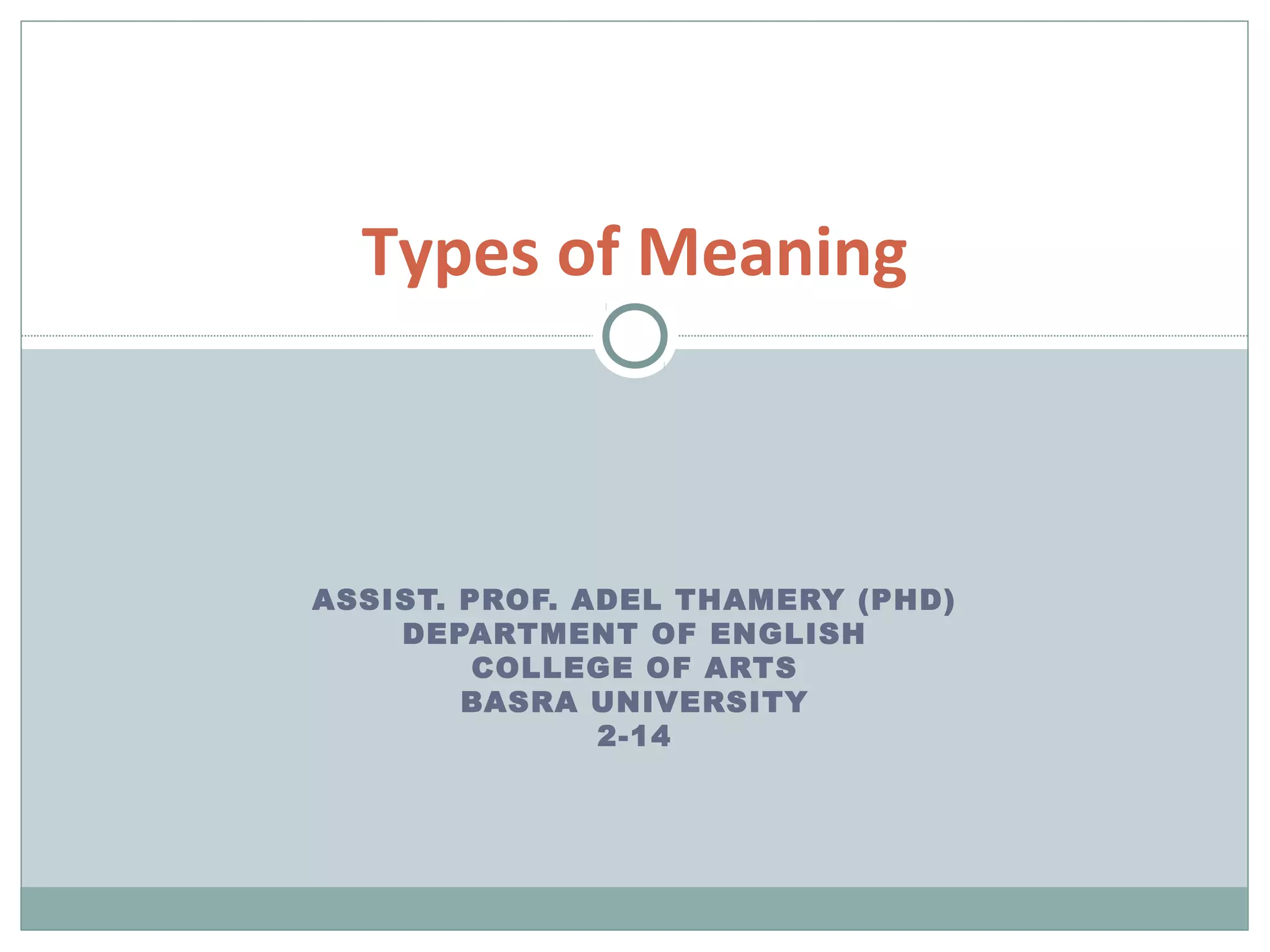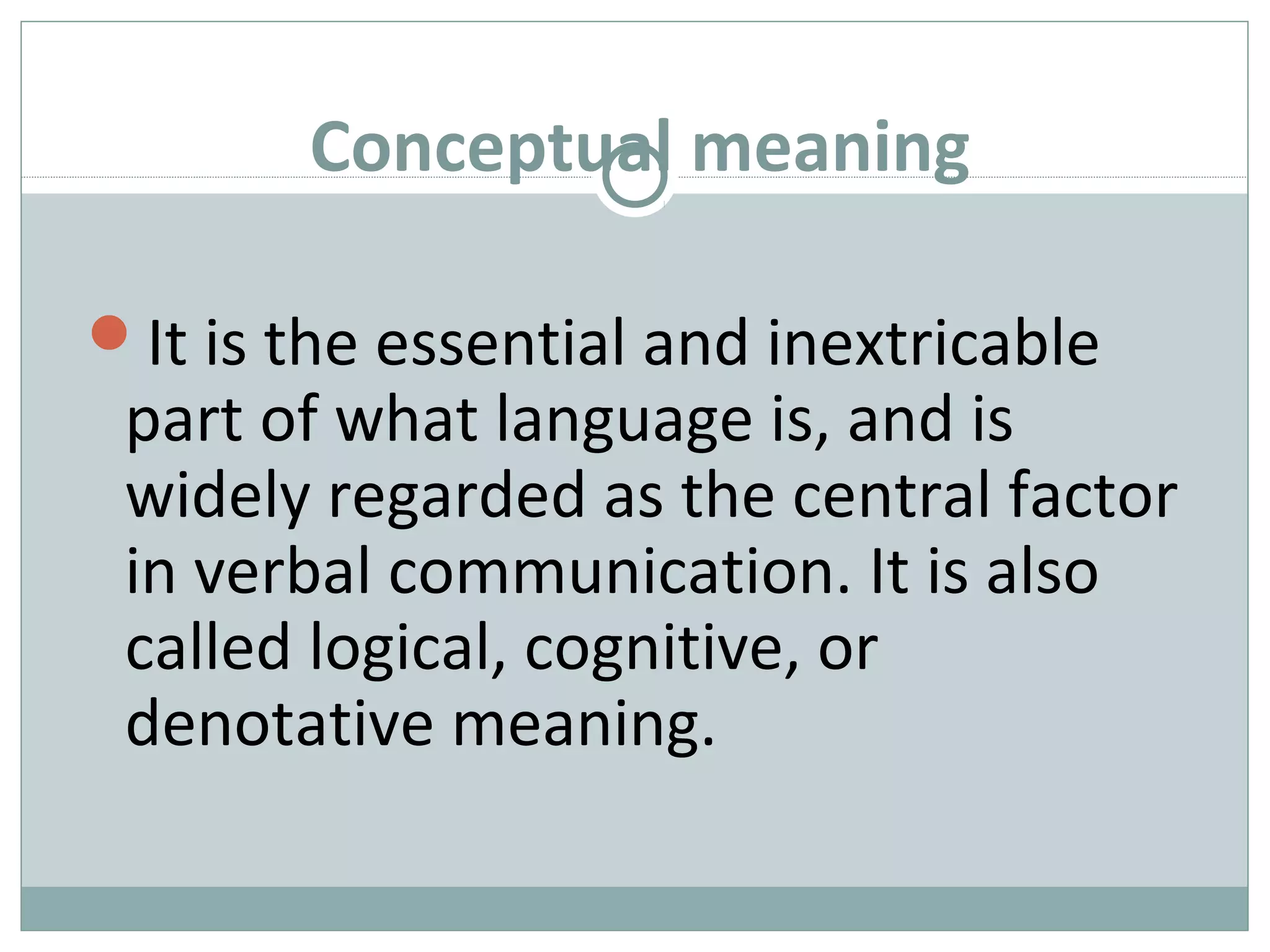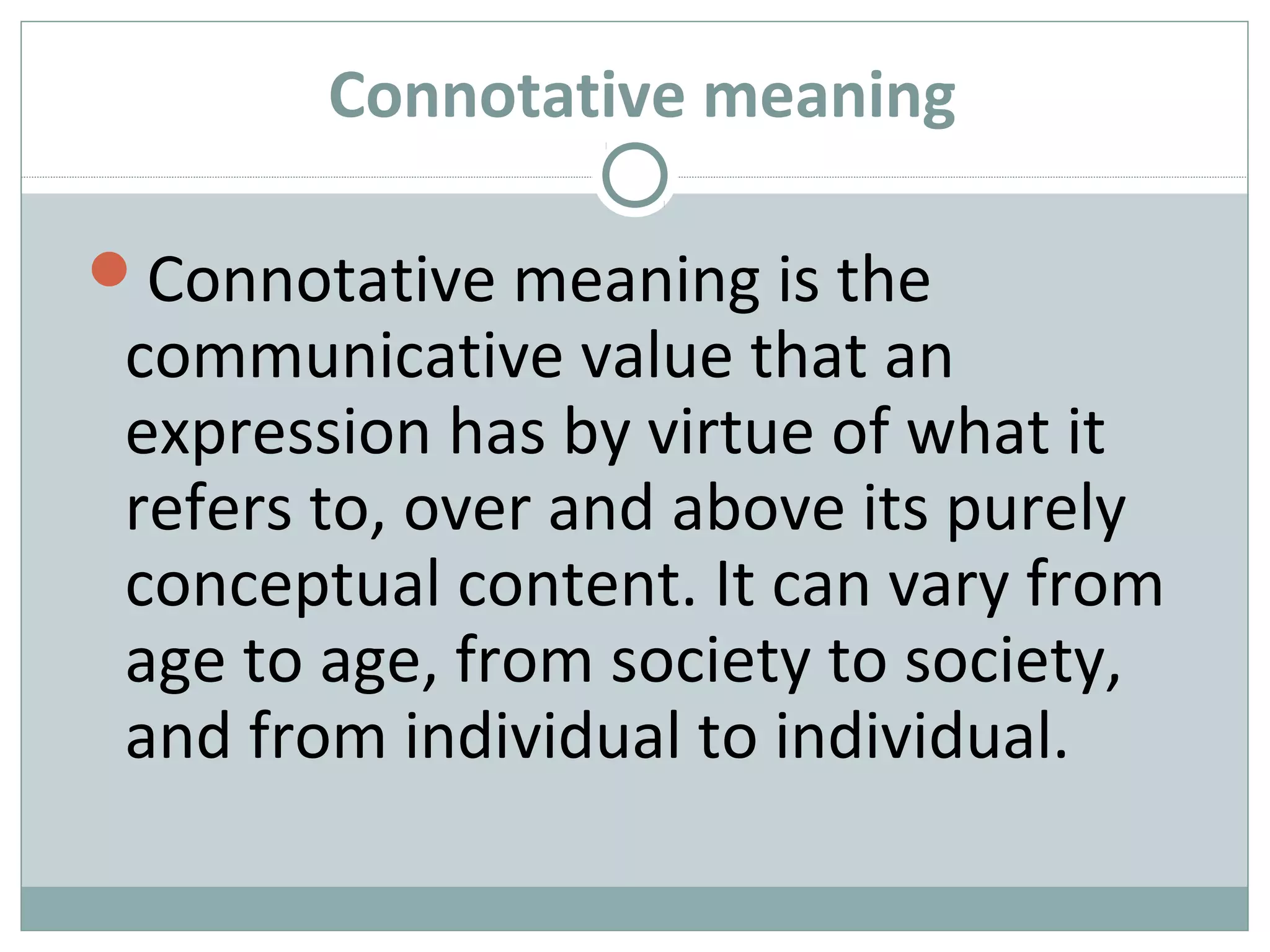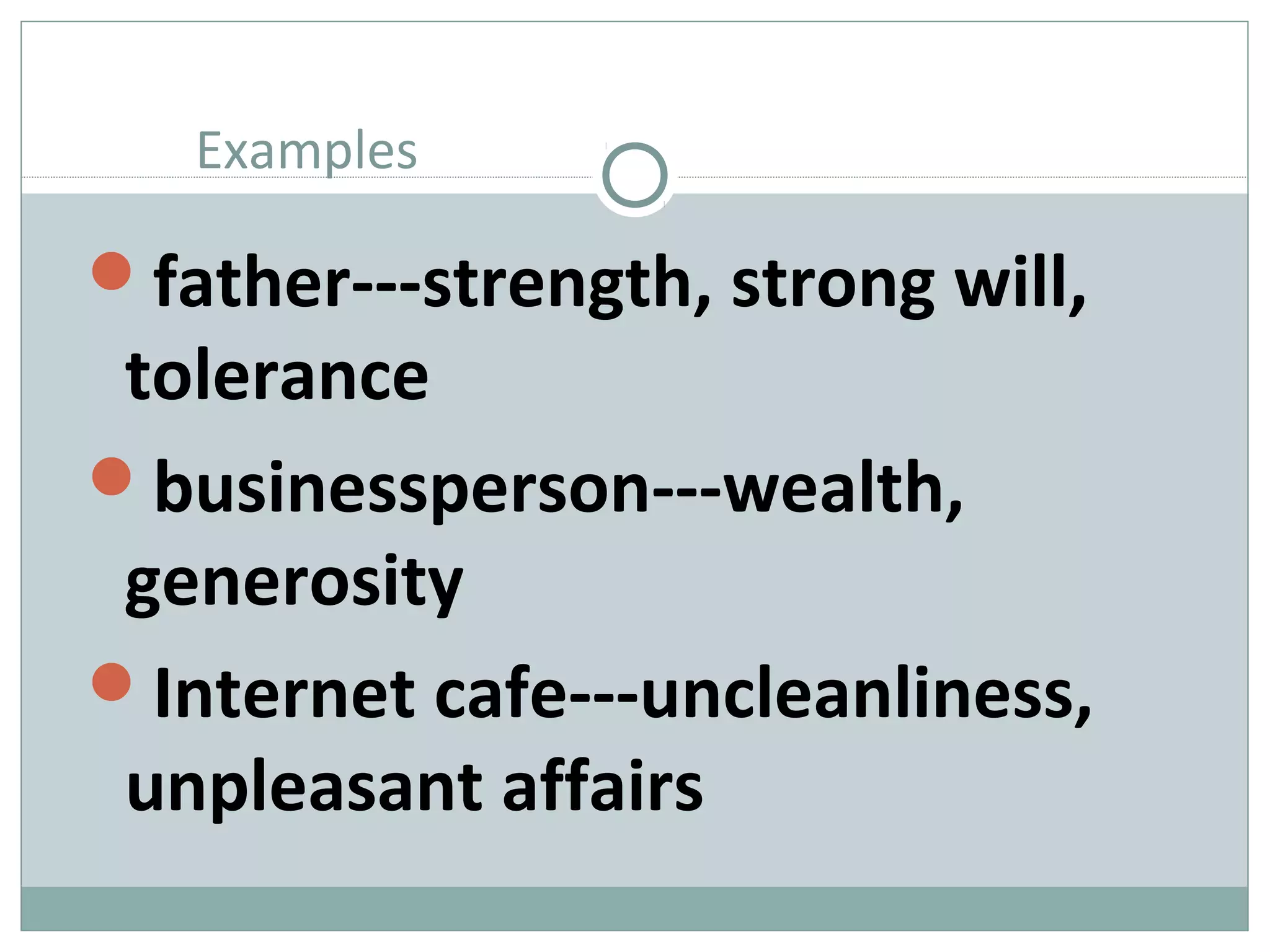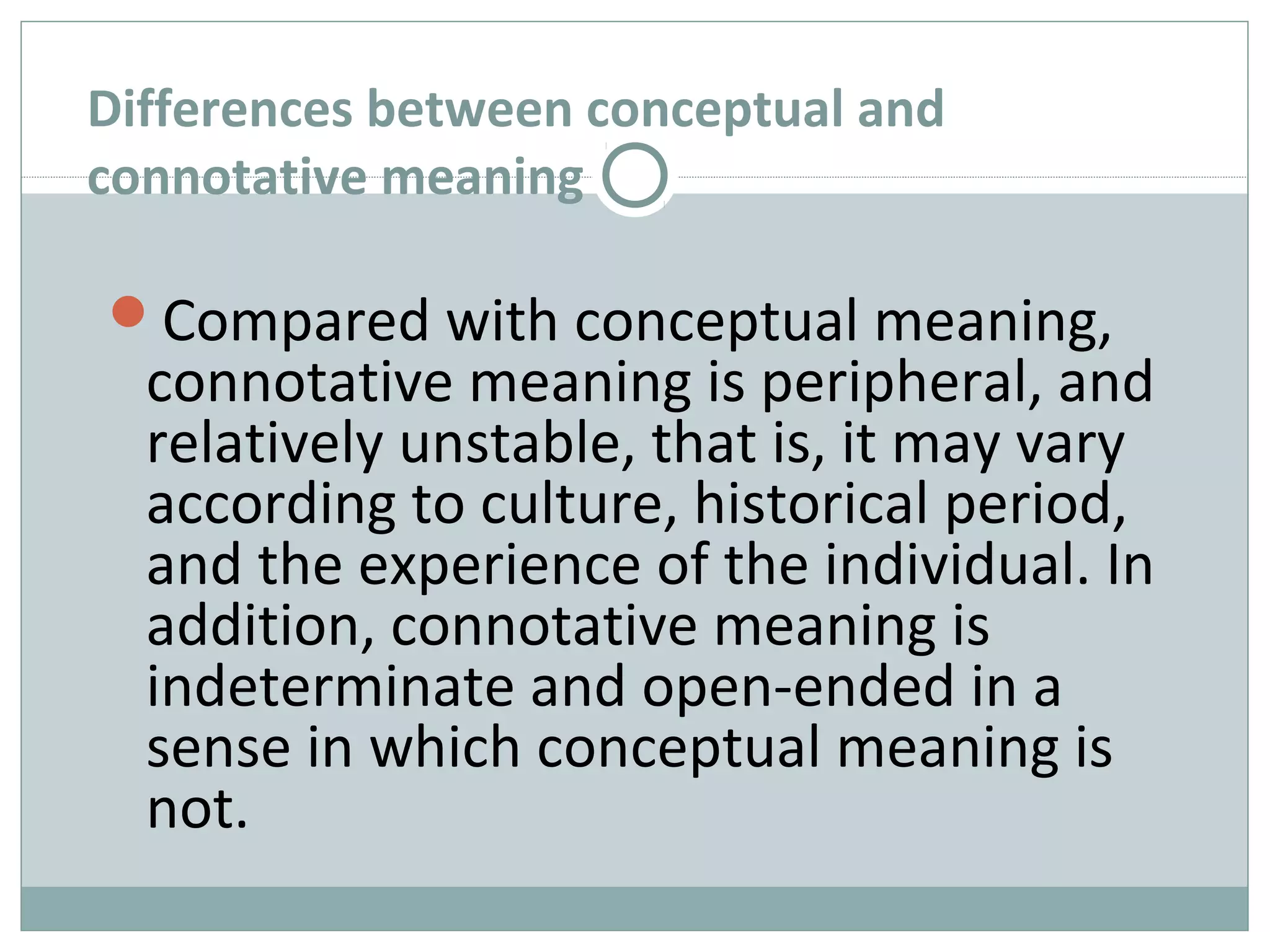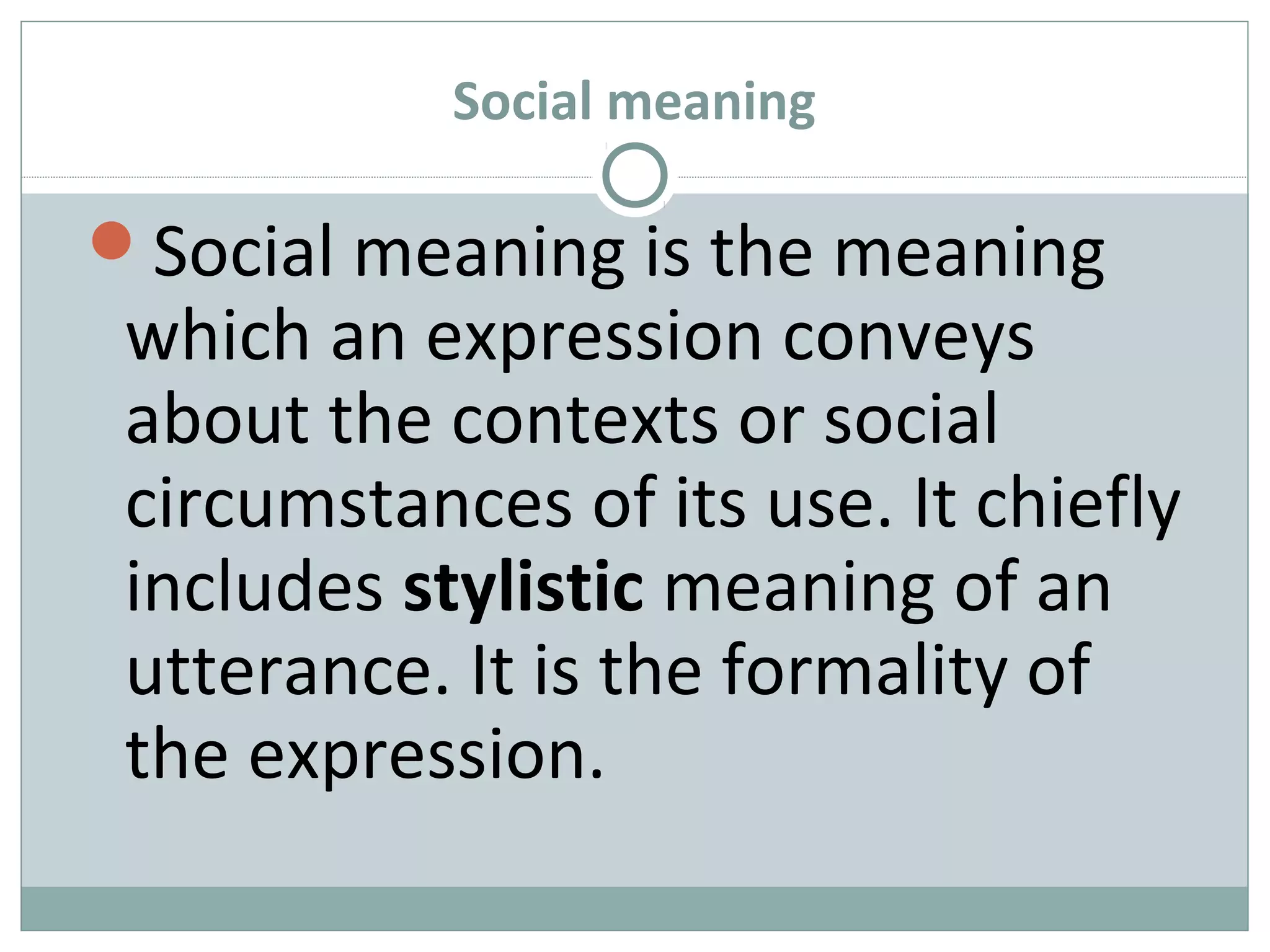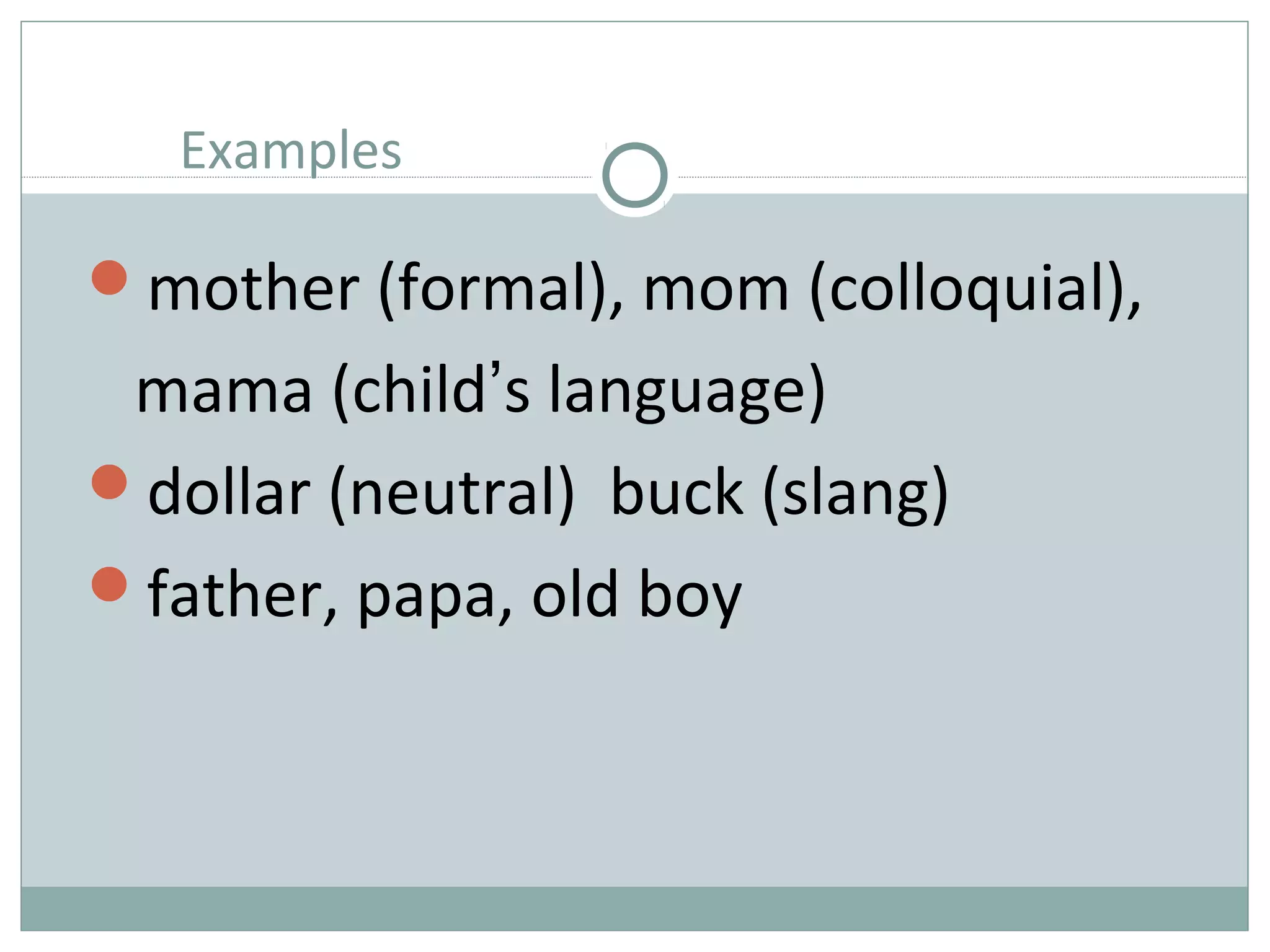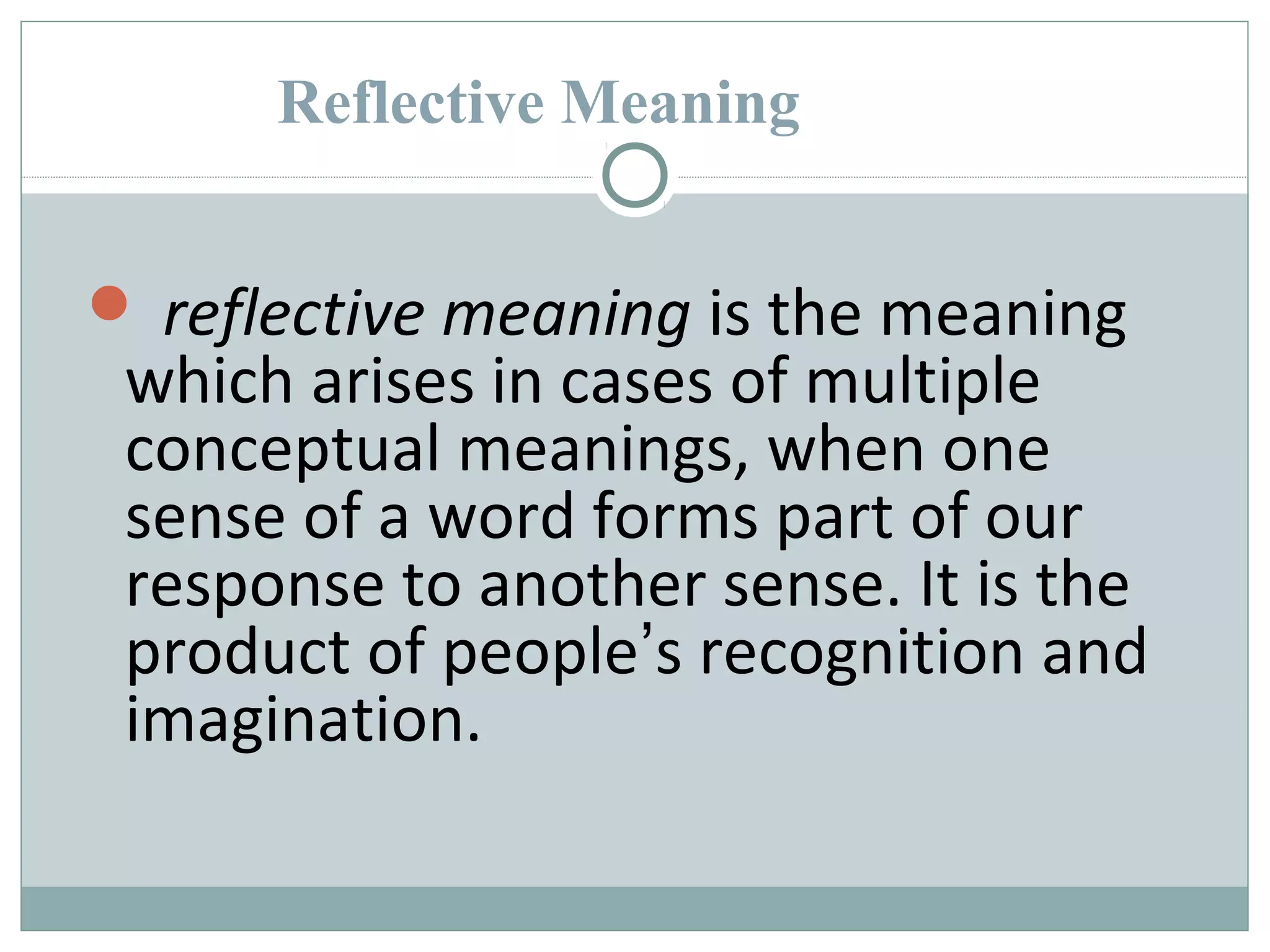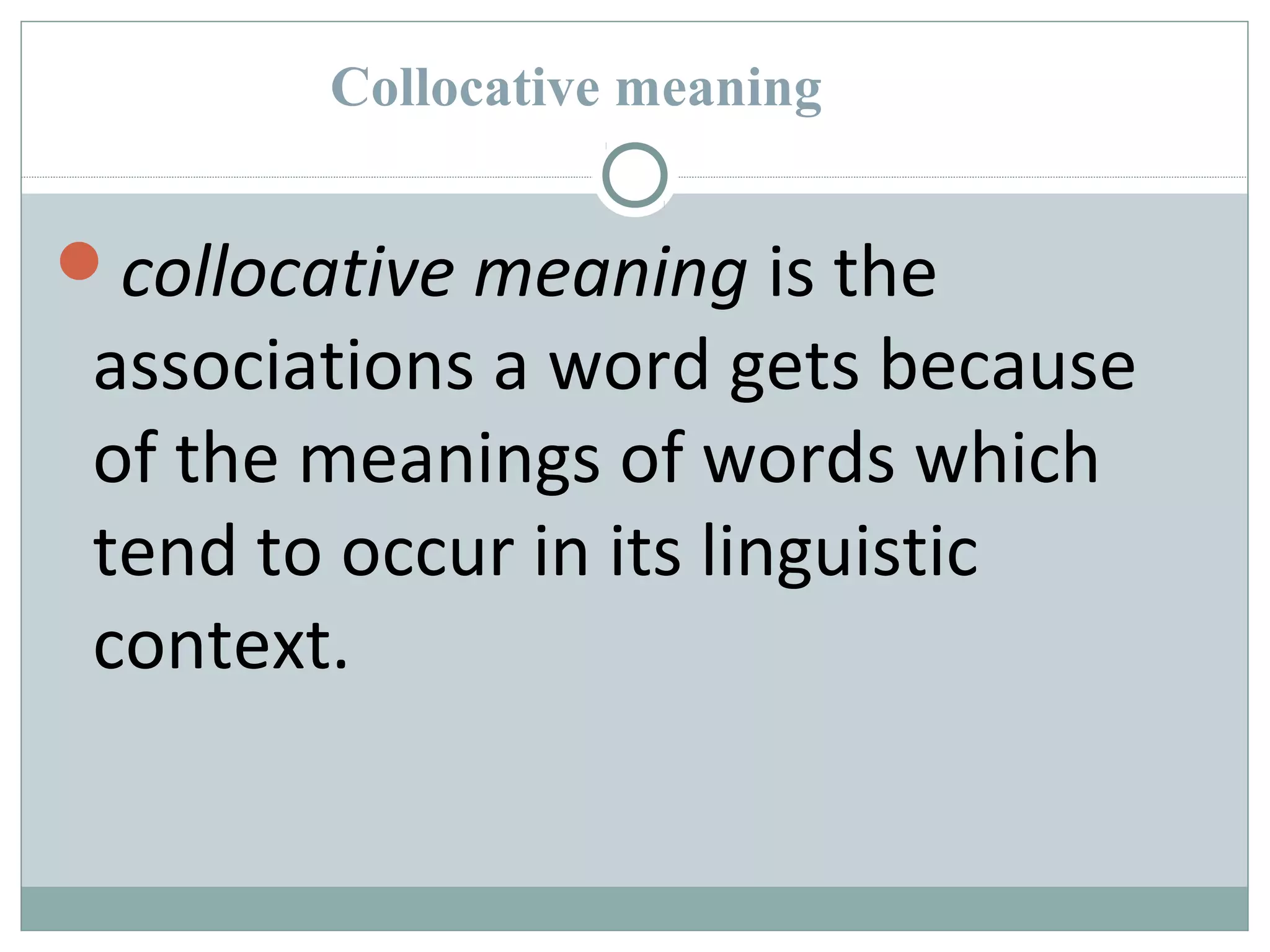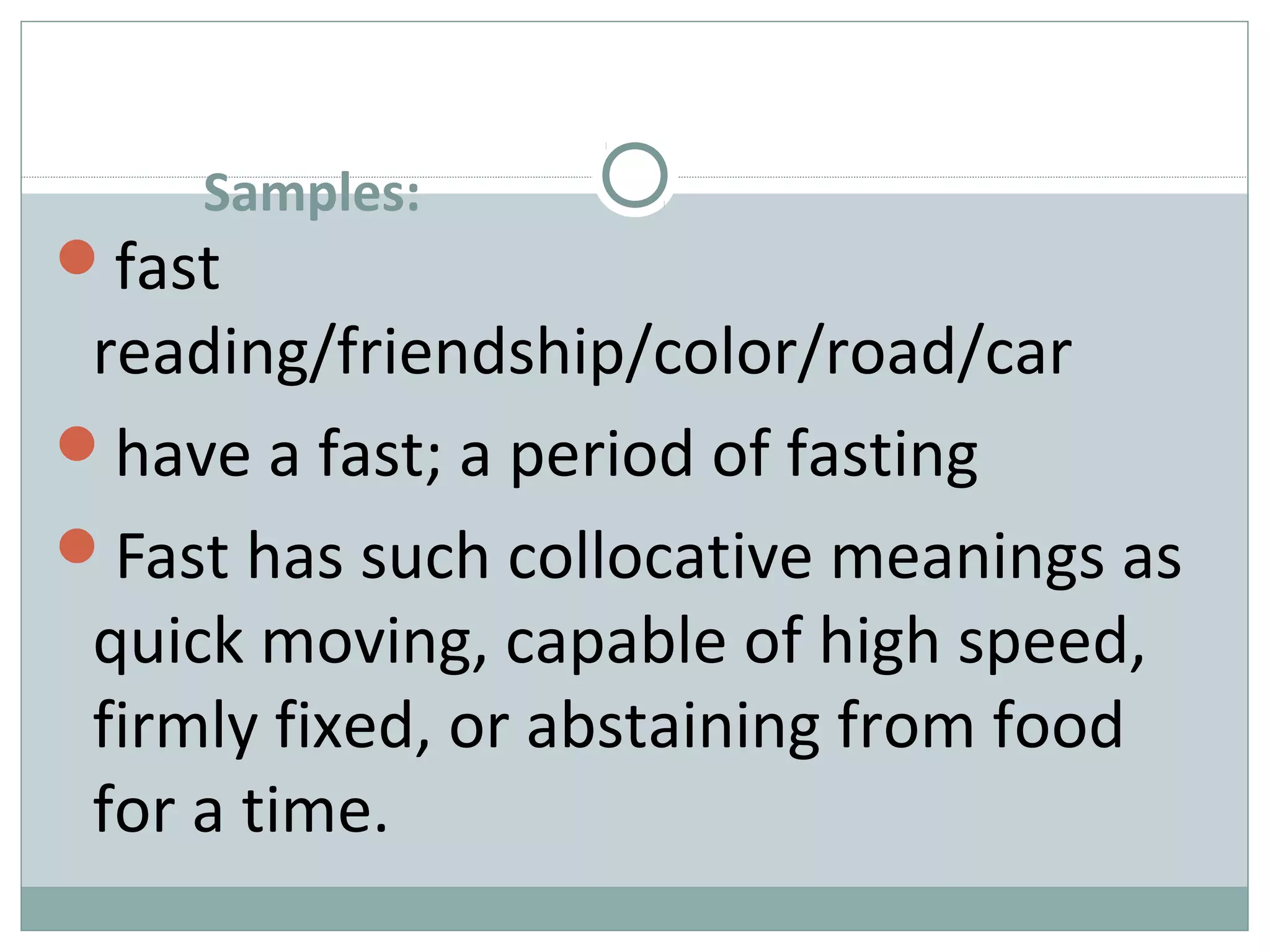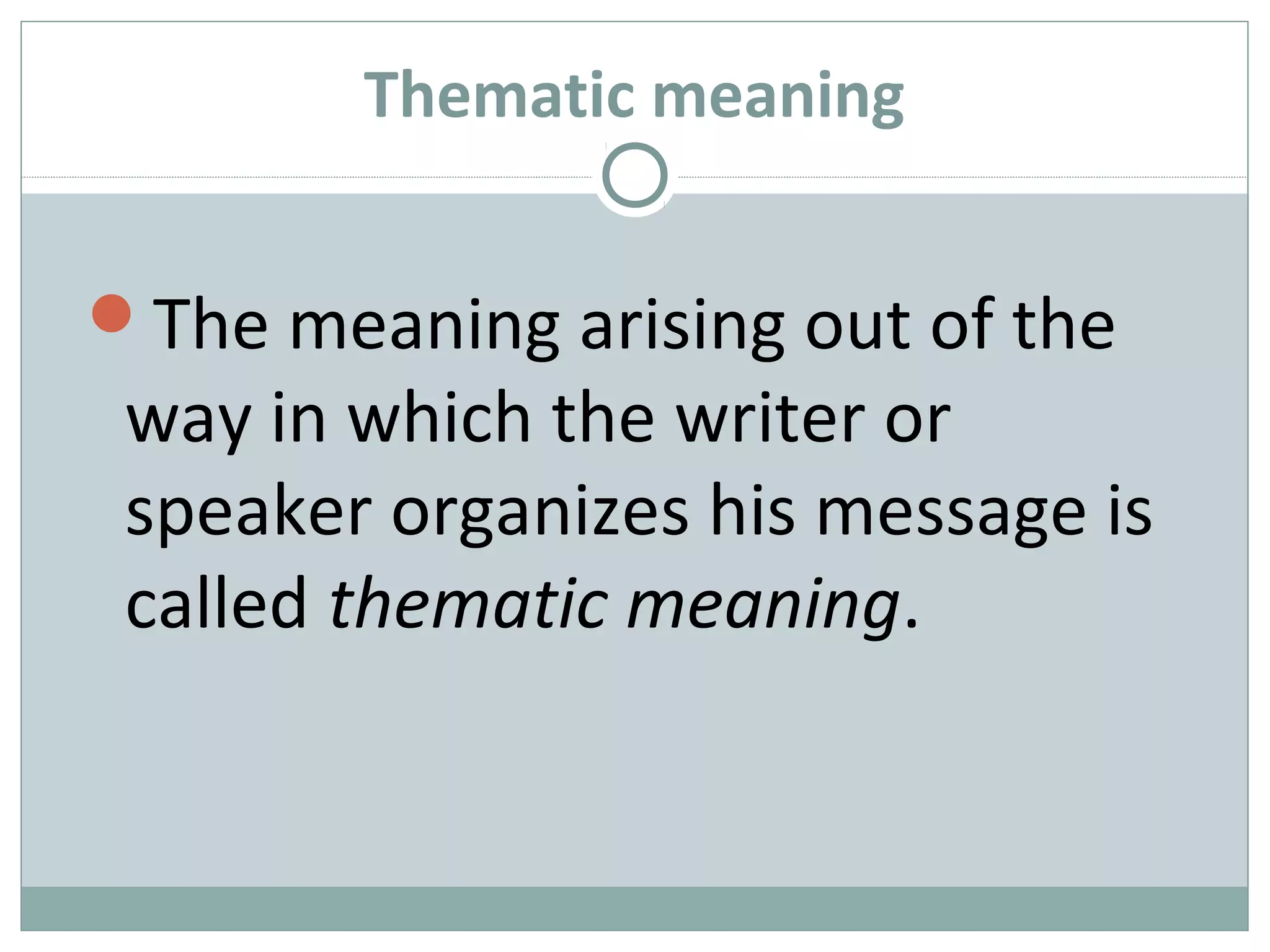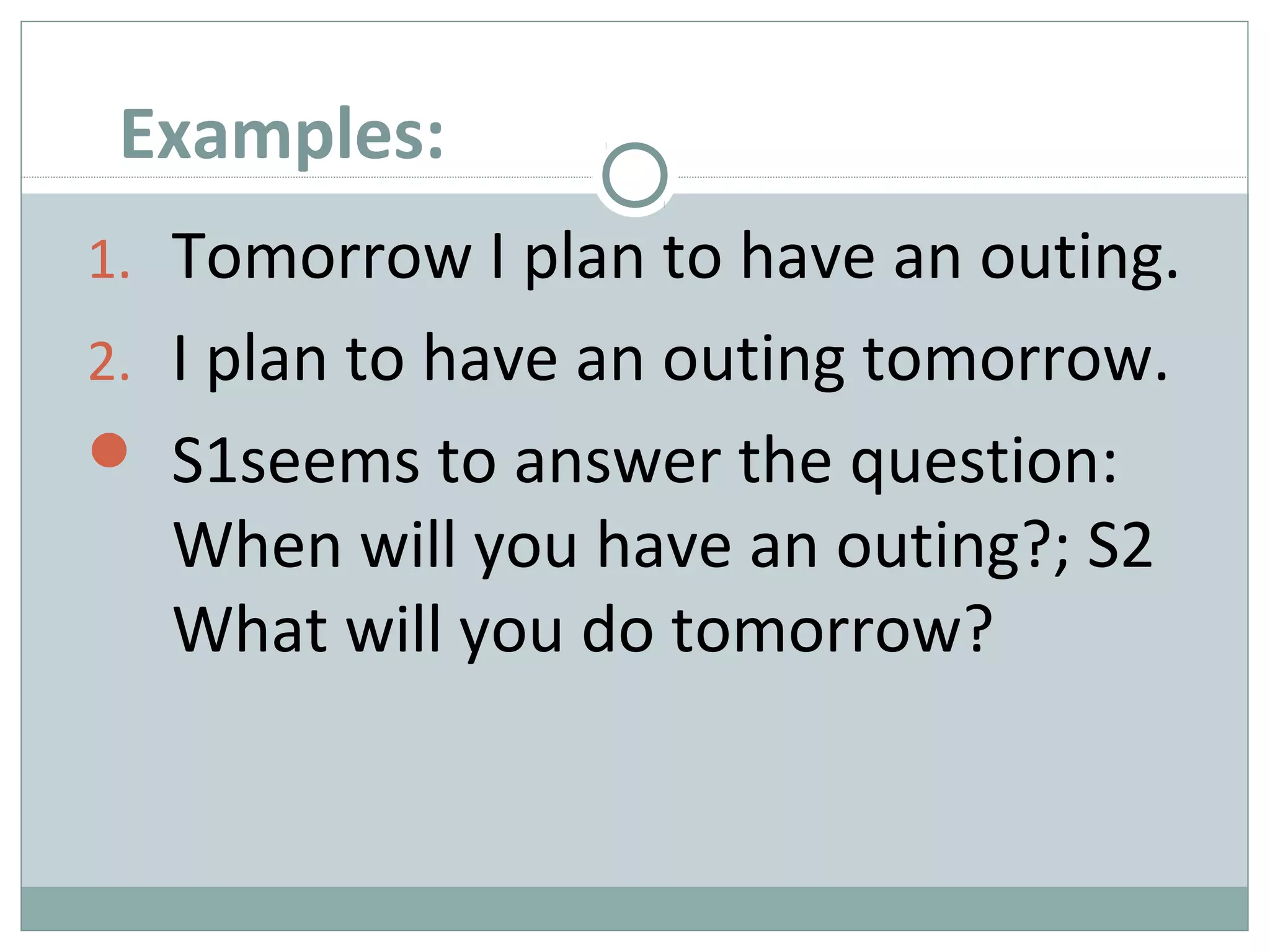The document discusses different types of meaning in language as classified by linguist G. Leech. It describes conceptual meaning as the essential, logical meaning of language. Associative meaning includes connotative meaning, which is the additional implied meaning beyond conceptual content, as well as social, affective, reflective, collocative, and thematic meanings. Connotative meaning can vary between cultures and individuals and is more unstable than conceptual meaning. Social meaning conveys information about language usage contexts. Affective meaning shows attitude and evaluation. Reflective meaning arises from multiple conceptual meanings. Collocative meaning comes from words that commonly occur together. Thematic meaning is based on how the speaker organizes their message.
